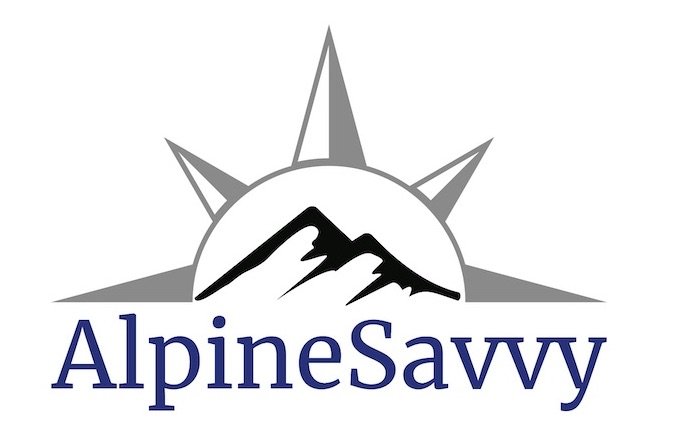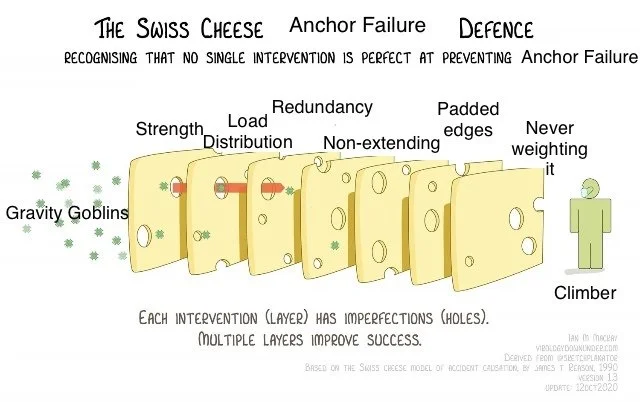The "Swiss cheese" model of risk mitigation
The Swiss Cheese model is a metaphor used in safety science. It illustrates how accidents typically occur due to multiple, overlapping failures rather than a single cause.
Each "slice" of cheese represents a layer of defense (such as safety measures or procedures) within a system.
Each “hole” in the cheese symbolizes a potential weakness or failure.
If a hole in one slice of cheese is covered by a solid part of the next slice, you have a partial problem but is not (yet) a catastrophe.
Even if a slice of cheese is only 5% holes, there’s still a small chance that two holes could align, and that's when you could have a serious problem.
How does the Swiss Cheese model apply to climbing?
This is why we have overlapping and redundant systems / safety checks for critical climbing aspects, such as:
The standard partner check before every pitch - knot tied correctly, harness buckled properly, rope threaded the right way in the belay device, all carabiners locked.
You rig your rappel, and then get a safety check from your partner. (If you pre-rig, then even the last person can get a safety check.)
If you’re top roping and reach the top of the route, check the anchor before you lean back and commit to it.
You and your partner each start the trip with a fully charged phone, GPX track file for the route loaded on your preferred navigation app, auxiliary battery and charging cable. At least one of you carries a printed PDF map of the route, and maybe a compass.
In each case, if there’s a failure in the first “slice of cheese”, it should be caught by the second safety check or redundant system.
Overlapping safety systems are a key way to reduce risk in dangerous activities. Don't neglect the partner safety checks, no matter how experienced you are.



